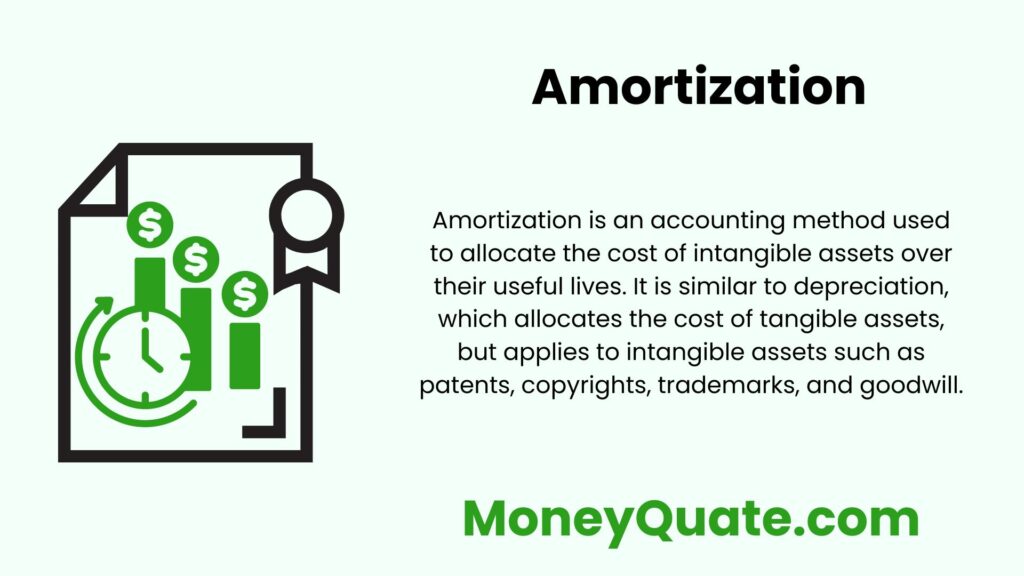Contents
Understanding Amortization
Amortization refers to the gradual reduction of an intangible asset’s value over time through periodic charges to income.
The purpose of amortization is similar to depreciation for tangible assets: to match the expense of acquiring the asset with the revenue it generates over its useful life.

Examples of Intangible Assets
- Goodwill: The excess of the purchase price over the fair value of identifiable assets and liabilities acquired in a business combination.
- Patents: Exclusive rights granted to an inventor for a specific period to manufacture, use, or sell an invention.
- Trademarks: Symbols, names, or designs used to identify and distinguish products or services in the marketplace.
Methods of Amortization
- Straight-Line Method: Allocates an equal amount of amortization expense each accounting period.
- Accelerated Method: Front-loads amortization, recognizing higher expenses in the early years.
Financial Reporting and Tax Implications
- Accurate Financial Statements: Amortization ensures that the cost of intangible assets is spread over their useful lives, matching expenses with revenues.
- Tax Deduction: Amortization expense may be tax-deductible, reducing taxable income and lowering tax liabilities.
Asset Management Considerations
- Renewal Planning: Amortization allows businesses to plan for the renewal or replacement of intangible assets as they near the end of their useful lives.
- Valuation Assessment: Regularly reviewing amortization schedules helps businesses assess the ongoing value and relevance of their intangible assets.
Examples of Amortization:
Goodwill:
A company acquires another business for $1 million, of which $300,000 is attributed to goodwill. Using the straight-line method over 10 years, the company records an annual amortization expense of $30,000 ($300,000 / 10 years).
Patents:
A pharmaceutical company invests $500,000 in obtaining a patent for a new drug. Assuming a useful life of 20 years, the company records an annual amortization expense of $25,000 ($500,000 / 20 years) using the straight-line method.
Trademarks:
A global corporation spends $2 million to develop and register a trademark for its flagship product. With a useful life of 15 years, the company records an annual amortization expense of approximately $133,333 ($2,000,000 / 15 years) using the straight-line method.
Conclusion
Amortization plays a critical role in accounting for intangible assets, allowing businesses to recognize their costs over time and match them with the revenue they generate. By understanding the principles and methods of amortization, businesses can make informed financial decisions and ensure accurate reporting of their assets’ values.